Merkley Family History & Genealogy
Merkley Last Name History & Origin
AddHistory
We don't have any information on the history of the Merkley name. Have information to share?
Name Origin
We don't have any information on the origins of the Merkley name. Have information to share?
Spellings & Pronunciations
We don't have any alternate spellings or pronunciation information on the Merkley name. Have information to share?
Nationality & Ethnicity
We don't have any information on the nationality / ethnicity of the Merkley name. Have information to share?
Famous People named Merkley
Are there famous people from the Merkley family? Share their story.
Early Merkleys
These are the earliest records we have of the Merkley family.

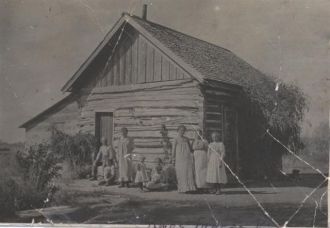
Merkley Family Photos
Discover Merkley family photos shared by the community. These photos contain people and places related to the Merkley last name.

Back row: Sarah (1876(; Alice (1879(; Mary (1882)and George (1885)
Grandpa Virgin with Alicia (1897) on his lap
Eugenie (1889); Jesse (1892 died in 1928); and Louise (1894)
Harold (1899) up on the edge of the sofa (Notice that there is 23 Years difference in Sarah and Harold)
Grandma Virgin
Now for some information:
Sarah and Alice moved to Rexburg/Salem when Mother was just a small child.
Their sister, Linda Rose (1880 and died 1882), was buried in St Charles and is not pictured. Her grave is there beside Grandpa & Grandma Virgin in St Charles.
Grandma & Grandpa visited the two daughters and decided to move up there also.
I remember Mother, Alicia, talking about some of their chickens getting away. Wish I could remember what they were called. Mutton chop that was the name of them. They had these fluffy feathers on their legs.
George died from a ruptured appendix in 1903. Grandpa Virgin made the trip to SL to do George's endowment and have him sealed to a lady by the name of Elvira Judy. She had died previously and this was a decision by both parents to seal them to each other.
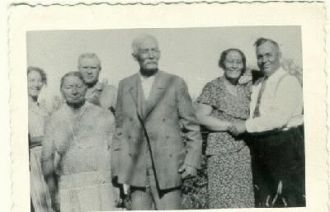
Far left behind Sarah Frances is one of Amos Moses Virgin's older sons with wife, if you know which please advise
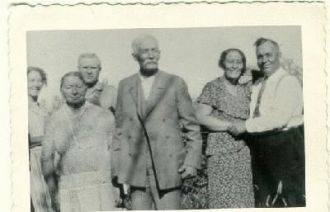
Center Amos Moses Virgin with Wife Sarah Frances Merkley
Far left behind Sarah Frances is one of Amos Moses Virgin's older sons with wife, if you know which please advise
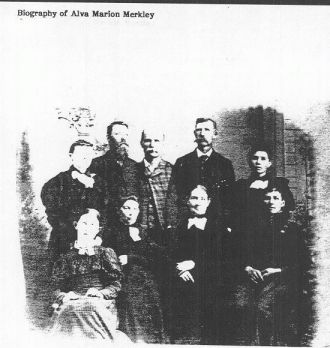
2. Christopher Amos Merkley
3. Alva Marion Merkley
4. Jacob Nathaniel Merkley
5. Lucy Merkley Pugmire
6. Mary Jane Merkley
7. Martha Elizabeth Merkley Pugmire
8. Xarissa Fairbanks Merkley
9. Sarah Francis Merkley Virgin
Merkley Family Tree
Discover the most common names, oldest records and life expectancy of people with the last name Merkley.
Updated Merkley Biographies
Popular Merkley Biographies


Merkley Death Records & Life Expectancy
The average age of a Merkley family member is 73.0 years old according to our database of 484 people with the last name Merkley that have a birth and death date listed.
Life Expectancy
Oldest Merkleys
These are the longest-lived members of the Merkley family on AncientFaces.
Other Merkley Records
Share memories about your Merkley family
Leave comments and ask questions related to the Merkley family.
Christopher Merkley was born in Ontario, Canada 18 December, 1808. His father was a farmer and Christopher grew up learning to work hard on the farm. At the age of fourteen he apprenticed to a shoemaker for three years and later worked at this craft for several years.
At nineteen he married Sarah Davis, age seventeen, February 1828. They had a son.
A few years later, they joined the Episcopal Methodist Church where Christopher became a class leader until 1837. In that year the sound of the Everlasting Gospel was brought to his hearing by two Mormon Elders. He and Sarah were baptized 27 July 1837. It did not take him long to determine to follow the principle of gathering. After settling his business, they started for Missouri to gather with the Saints.
There were two other families anxious to leave for Missouri too, but as they were too poor to get there, Christopher and Sarah brought them with them. They found Missouri filled with angry mobs and were surrounded for weeks at a time by them. It was a dreadful time for the Latter-day Saints. Christopher was stopped and questioned at gunpoint several times.
Christopher concluded that he should go to Far West. Bishop Buchanan told him of a cabin that they could use, but that night the mobs came and pulled the roof off of it. Later that night a storm came and they woke up to a foot of snow making it very uncomfortable. That morning, Christopher gathered up his horses, but couldn’t find his cow. While looking for it he saw two armed men approaching on horseback. He jumped into the creek bottom and they went by without seeing him. He and Sarah found another place to live --- with eleven people already there. More Saints came and wanted to stay with them. As there was very little food, they went to the fields and got some corn that had been left on the stalks, boiled it, grated it, and made bread with it for all to eat.
A warning came that mobs were driving the Mormons out and plundering, so Christopher immediately rode to Far West to warn the people. That afternoon they saw the army coming upon them. Being unarmed, Christopher grabbed a pitchfork, and swung out with the others in two wings, the Prophet being at the head of the right wing. There were about 350 Mormons in all. A portion of the mob rode up to within a few hundred yards of them, halted, then scattered around like sheep, and then left. Later Christopher was thrown in company with one of the mobbers. He asked the guy why they had left so suddenly. He said that there were too many Mormons to fight. He claimed they saw ten thousand.
That winter Christopher and another man killed 43 deer and shared the meat with the poor. Later, a neighbor named Sloan who was very poor, complained that he had no way to get to Quincy, Illinois, where the Saints were now going, as they were being driven out of Missouri. Christopher took pity on him and told him that he would help him get there if he would help pay expenses. The distance was over two hundred miles, and made in the dead of winter. Christopher received only three dollars and fifty cents.
Some Saints began to establish themselves in Quincy. Finally, when the Prophet Joseph came out of Liberty Jail, he came to Quincy and called a conference there. Christopher observed the following events which occurred then.
As the people were gathering at the camp meeting ground, a brother approached Joseph and dunned him for money. The Prophet asked him how he thought he could have money since he had just gotten out of jail. That did not stop the man. The debt was not the Prophet’s, but another’s who had bought land from this man in Missouri. Soon after the purchase, the Saints were driven out and had to leave everything behind! Yet, the man insisted on being paid. The Prophet told him that he had five dollars in his pocket and if four dollars would do him any good, he could have them. The man accepted. Brother Joseph took five silver dollars out of his pocket and gave him four of them, returning one to his own pocket. While Christopher continued walking around with the Prophet, a man came and told him a sister wanted to see him. Brother Joseph and Christopher went to see her. She was sick and her friends wanted her to return to the East where they would care for her. He asked her what she wanted to do, and she said she wanted to stay with the Saints. He took his last silver dollar out of his pocket and said, ‘Then stay, dear Sister, and God bless you.’ He then instructed the brethren not to let her suffer.
At the close of the conference, the Prophet went to Commerce, later called Nauvoo. On his way he stopped at Christopher’s home to take dinner with them. Christopher asked him if he would like a little money. He said, ‘Yes, Brother Merkley, I am now on a journey of fifty miles, and I have not a dime in my pocket.’ Christopher gave him a sovereign (a gold coin worth about twenty dollars.) He took Christopher by the hand and blessed him and said, ‘Brother Merkley, may you never want.’ Christopher later said, ‘I never have.’
During their time in Nauvoo, Christopher went on four missions. On the first, to Ontario, Canada, seventy-two souls were baptized, and on the second, twenty-three. In Nauvoo, he was a member of the Nauvoo Legion, had homes at two locations in Nauvoo, and worked on the Nauvoo Temple. His wagon hauled the first load of dirt out of what would be the basement area for the temple.
As he retuned from a mission, the rumors of the martyrdom of Joseph and Hyrum were confirmed. None of the Twelve were there then, having gone on to Iowa. Christopher stayed to continue working on the temple until it was done. He and Sarah had their temple work done in 1846 before he and his family left to join the Saints in Winter Quarters.
Before he actually left the States, he purchased six panes of glass, a pair of hinges, and a lock for a door. He thought that if ever he could build a house in the West with so many pains of glass in it for light, and a door in it, he would be satisfied.
When he got to Council Bluffs, the Indians stole his horses. He went right to the Omaha Indian Village, and through an interpreter told the Chief that he wanted his stolen horses back. The Chief said they had them, but had only borrowed them. He returned them to the ‘brave yellow-hair.’
While Christopher was at Winter Quarters, trying to get enough money to buy an outfit to go across the plains, he worked as the ferry-master at the ferry which crossed the Missouri River. He was in charge of boats taking both the Saints and gold-seekers across. The river was very high with a great deal of flood-wood passing down, making it very dangerous. He had narrow escapes when cattle became frightened and crowded to one side. But by Christopher’s ‘close watching and prompt action,’ they had no accidents.
He began crossing the plains in July 1849, in the Enoch Reece Company. As he was known to be good at ferrying, he had the assignment to find the places to ford rivers and to build ferries for themselves and later companies. They had many cattle stampedes on their journey. As they passed Big Mountain and entered Salt Lake Valley on 3 October 1849, there was an early snow of over a foot deep to trudge through.
When he started to build a house in Utah, (it was on First West and North Temple), he could not get enough lumber to finish it, so he built a whip saw, and by that means he gained sufficient lumber to finish. By the spring of 1851, he had finished, painted, and paid for his house --- with its pains of glass, door hinge and lock.
While in Utah, he worked at many things. He had a store, sold real estate, bought some camera equipment in the East and learned the ambrotype business. He took pictures all over the West as he traveled in a house-on-wheels, a wagon he had outfitted to do that. He was an Indian scout, a shoe-maker, built a lumber mill, ran a cargo business, had a cattle ranch and a farm.
However, he had some accidents with his arms and eventually became so crippled by them that he could not do hard manual labor afterwards. Nevertheless, through his example, all of his children learned that all honest work was worthwhile.
He met and married Xarissa Fairbanks, as a plural wife, when he was fifty years old. In many ways, this was an act of compassion, as Xarissa, through what family members call “an unfortunate experience,” had a child, but no husband. She was only twenty years old.
Not only Christopher, but Sarah, welcomed both Xarissa and her child. Christopher adopted the child, called Fanny, and had her sealed to them when he and Xarissa was married. Sarah was called Grandma by all of Xarissa’s children. Because of Sarah’s failing health, Xarissa did all the hard work, and Sarah tended the children.
Xarissa had three sets of twins, as well as a single son.
Early in 1864, Christopher was asked to move and to help settle southern Utah. He made preparations to leave all that he had built up. He had some of his household goods sent as far as Cedar City, when he went to ask Brigham Young where he wanted him to settle. He said that Christopher could choose any location in the St. George area. While talking with him, Brigham Young perceived that his arms were bad, and he asked Christopher if he could use them much. When Christopher admitted his problems, President Young released him for the call to relocate, for which Christopher thanked him.
When polygamy became illegal, Xarissa and her children went to Bear Lake to live. Their oldest twin sons were eighteen years old and could manage a farm.
Christopher came there to help for several years. He built a mill there too, though in 1884, it was destroyed by fire. He moved back to Salt Lake, where he was needed too. There, in spite of his crippled arms, he helped build the Salt Lake Temple, and later, the Logan temple as well.
When he was seventy years old, he was called on his eighth mission, where he served again in Canada. After he returned to Salt Lake City, on February 6, 1887, a woman from Iowa who had traveled over a thousand miles came to have him baptize her. She had heard him preach when she was a girl. At that time, Christopher had baptized her sister and several members of her family. Now forty years later, she wanted the missionary she had heard preach the restored gospel to her family to do the baptism.
She had been partially paralyzed on her left side for three years. She could not hold anything in her hand or play the organ. Christopher baptized her. Then he and her brother-in-law gave her a blessing that she would be restored to health. She was so far restored that she sat down and played the organ. She could also hold a pin and could feel it, which she had been unable to do for a long time.
When Christopher was 86 years old, and Sarah 83, the capstone of the Salt Lake Temple was dedicated. It was a cold spring day, 6 April 1893, a full year before the Temple itself was dedicated. Christopher went to take part in the dedication and was chilled, and developed pneumonia. Sarah was also very sick at the time, and not expected to live. When he died on 3 May, 1893, his body was held for two days, until she died. A funeral was held for both of them and they were buried in one grave in Salt Lake City.
Christopher wrote his own autobiography before his death. He closed it with this final testimony. “I am now drawing near the sear and yellow leaf, being seventy-nine years old …. I am still hale and hearty, and do not allow any young man to walk past me on the street. I have filled eight missions and baptized eighty-five persons….I have always paid my tithing from the days I was in Nauvoo….And now I am watching the events transpiring in these last days in fulfillment of ancient prophecy and of the words of the Savior as well as the prophecies of the Prophet Joseph Smith….”
Surely he was among those who had been “True to the Faith.”
Followers & Sources

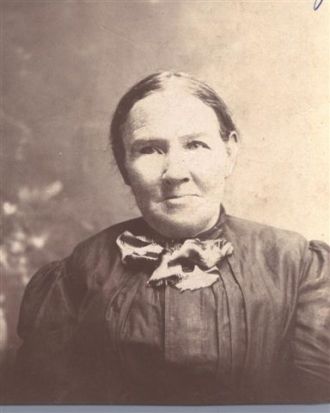
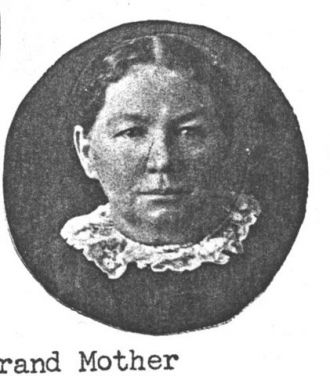
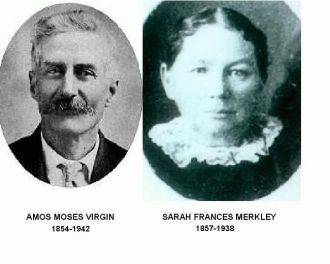

Xarissa Fairbanks was born on October 29, 1838 at LaPorte, Indiana. She was the daughter of Amos and Mary Batholomew Fairbanks. Her mother died on April 7, 1843, leaving four young children. Xarissa was only four years old then.
Amos and Mary had joined The Church of Jesus Christ of Latter-day Saints, so when he was left alone, Amos took his young children to Nauvoo. They lived through the hardships and persecutions of the Saints and with them made the long journey across the plains. Although she was only thirteen years old, Xarissa drove a wagon all the way, besides caring for the needs of the family, which included a year younger sister as well as her father and older brother.
Times were hard and Amos was concerned for his children. Shortly after they arrived, he met and married Catherine Raymond, a widow, who had a number of children of her own. The family moved to Bountiful, but there was not much money and conditions were rather unpleasant, especially for Xarissa. She was a sensitive young girl who was given way too much responsibility while she was too young. When she was nineteen years old she had an unfortunate experience which resulted in a baby being born out of wedlock.
Christopher Merkley, who had been baptized by John E. Page, had also come west with his wife and children. Christopher was a versatile, industrious man, and by 1858, had accumulated a farm with wheat fields an orchard, and large vegetable gardens.
In that year, he heard of Xarissa Fairbanks. Although he was fifty, and Xarissa was only twenty, with the encouragement of his wife, Sarah, he asked Xarissa to be his wife. When Xarissa learned that Christopher was a diligent church worker and a prosperous leader in the community, she felt that the marriage would be an answer to her prayers. She accepted the proposal. They were married by President Brigham Young in his office on January 17, 1858.
Christopher took Xarissa and her baby daughter, Fanny, home where his first wife, Sarah, welcomed them. He adopted Fanny. The two women were congenial and happy together. Each tried to help the other, and Sarah took the place of the mother Xarissa had lost when she was so young. In later years the children said they had, “never heard an angry word between the two women. They shared each other’s joys as well as their sorrows.”
Xarissa was always strong and healthy, so she did the heavy, outdoor work. She took care of the garden and the orchard. She always made the fires whether Christopher was at home or not. She did the washing, the cooking, and made all the clothes. Sarah, who was never strong, tended the children, who called her Grandma, spun the wool, knitted the socks, and did the light house work.
There were few comforts during the first years…. No washing machines, candles were made by hand with tallow set in molds to give light. The carpets were braided rugs. All the clothes were made by hand.
Christopher and Xarissa’s children, there were eventually several, brought joy to the Merkley home. Fanny, the oldest, was a great help to her mother and brothers and sisters. When Chris and Jake, the first pair of twins, were born, Jake was a strong, healthy baby, but Chris was sick and sickly. He was hardly expected to live for the first year of his life. Due largely to the constant loving care of the three women, he became a strong and sturdy man, and lived to be seventy-three years old.
During the early days of the settlement in Utah, there were many hard times. At the time when the grasshoppers and crickets came into the valley, the whole family worked in the fields to save the crops. Christopher made nets of burlap sacks. He fastened a hoop of wire in the top end with a handle attached. They would swing these nets as if mowing with a scythe, thus catching bushels of the pests which they burned or buried. Jake and Chris, holding the ends of a rope stretched across the field, would go from one end to the other keeping the grasshoppers moving. How happy they were as the hundreds of seagulls arrived and saved their crops!
When the children were old enough to go to school, Christopher arranged for Xarissa and her children to go to John Morgan’s College. He bought a life membership in this school for her and six of the children, and they attended it for three or four years, thus fulfilling Xarissa’s lifelong dream of obtaining an education.
At the time Johnson’s Army was threatening to invade Salt Lake City, the Saints were ready to destroy their homes and everything they owned if the army entered the valley. Xarissa and all her children were loaded into a wagon and went as far south as Springville. Only a few men and boys were left in Salt Lake to destroy the city. Fortunately, an agreement was made between President Brigham Young and the Army, which allowed them to enter the city on conditions that they would cause no trouble. Families gradually came back to their homes and resumed their lives, but those were really troubled times.
Christopher was a good provider and had many schemes for making money. At one time he built a house on wheels, and traveled through the state taking “likenesses.” He took Xarissa with him on one of these trips to Southern Utah.
By the middle of the 1860’s, polygamy was declared illegal by the U.S. Government, and the Saints who refused to give up their plural wives were sent to the State Prison. To comply with the law, Xarissa and her family moved to Bear Lake, Idaho, and lived apart. Christopher had been able to obtain a ranch there by trading some of his property in Salt Lake City. He also started a flour mill. Xarissa moved there in 1874. She and her children took a herd of cattle and nearly fifty head of horses to their new home.
On the ranch, it was Xarissa who took the responsibility for the family. They first lived on a ranch about 14 miles from St. Charles. She was a good nurse, and was called out many, many times to attend to the sick. The night was never too dark, nor the job too hard for her to go wherever she was needed. Her son Al said. “Her home and all she had she would share with those in need.”
Every Sunday for years Xarissa and as many of her children as were at the ranch went to church in a horse and buggy. They traveled the fourteen miles, there and back, and never missed a Sunday, and were never late. She was a devout Latter-day Saint, and raised her children to be fine men and women of whom she could be proud. She said they were the greatest joy of her life.
Xarissa’s greatest pleasure, other than her children, and her church, was reading. She read everything she could get, especially the scriptures. She read all the latest news and magazines including Perry’s Monthly, the Juvenile Instructor, the Women’s Exponent, and later the Improvement Era. She always read the best. She had a good memory and was a great story-teller. She had many scrapbooks which showed the extent of her reading. When she finished with a volume of magazines, she would tie them together so she could pass them on for someone else to enjoy.
She was one of those quiet people whose life is their most eloquent sermon. She lived to see all of her children, except one, happily married. Fannie married Amos Virgin, our ancestor.
Chris stayed on the farm and ran the flour mill for a few years. Then Jake and his family moved there. Eventually, Xarissa moved to a house in St. Charles, where she spent the rest of her life.
One of her sons, Jake, eventually moved to the Cardston, Canada area. Xarissa was able to visit him there on two different occasions. When she was 63, she went to help them with their first baby.
Xarissa died in her home in St. Charles on November 29, 1904 from blood poisoning, caused by a splinter of glass which was lodged in her finger. Her last years had been happy and fulfilling. She enjoyed her children and her grandchildren who lived nearby. She was buried in the St. Charles cemetery. She had lived for 67 challenging and productive years, loved by all who knew her.
Obviously, she overcame many difficulties to become one of the Lord’s most faithful daughters.